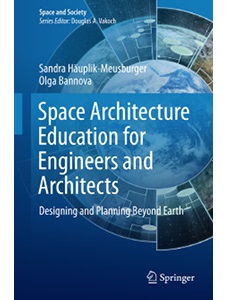The field of space architecture is not new. It can arguably be traced back to the late 1960s, when industrial designer Raymond Loewy worked with NASA on the interior design of the Skylab space station. But it is becoming increasingly relevant as the Bigelow Expandable Activity Module (BEAM) continues to orbit Earth attached to the International Space Station, and Bigelow Aerospace makes plans to launch its B330 standalone space station at the end of the decade.
Although this book was put together long before BEAM reached orbit and mentions Bigelow only in passing, it provides decent coverage of expandable modules including NASA’s TransHab project, which Bigelow developed privately to produce the B330. However, its main function is not to provide project summaries, but to explain space architecture in an educational context.
It does so in six chapters, covering approaches, methods and planning; and habitation systems research, design concepts and validation. Each chapter begins with an abstract, ends with references and is illustrated with line diagrams and colour photographs. Readers will not be in doubt that this is an academic text because of the plethora of multi-level subheadings. Although this sometimes produces extremely brief subsections, it does make it easy to gauge the coverage of each section – using the seven-page contents list – and makes up somewhat for a rather short index.
An interesting innovation is the inclusion of ‘guest statements’ embedded within the chapters. Written by experts in the field of space architecture and space education, they provide additional insight and perspective.
According to the authors, this book is designed to assist students, but also to help space educators “understand a multidisciplinary approach” and introduce architectural studies into their courses. Ultimately, the authors hope that space architecture will become “integrated” into aerospace curricula. Of course, in that sense, architecture has something in common with law, policy, ethics and a multitude of other subjects that space scientists and engineers should learn something about.
Coupled with the current reality of an expandable module in orbit, it seems that space architecture will become increasingly important in the coming decades. As well as being a well organised educational text, this book offers a useful introduction to the field.
Mark Williamson











